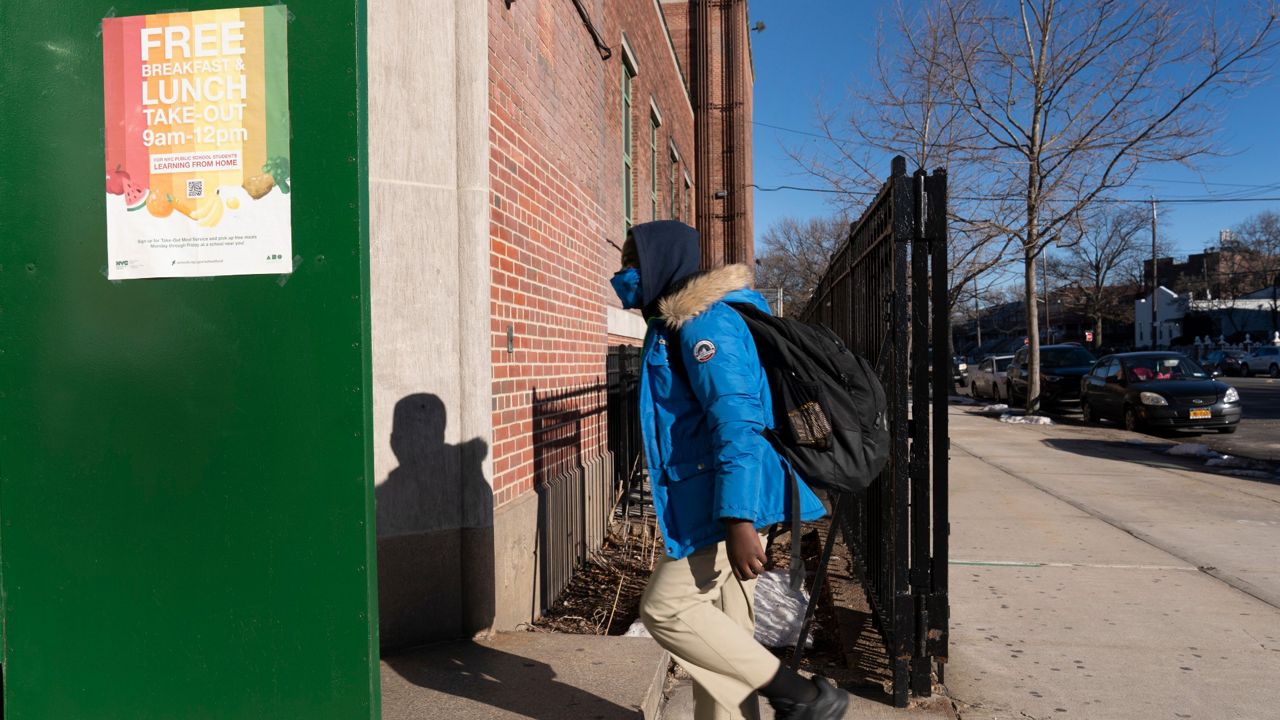More than 65,000 fifth-graders received offers to middle schools Tuesday, and admission changes, spurred by the pandemic, mean some traditionally selective schools will be more diverse this fall.
The city put a one-year “pause” on the use of academic screens for middle schools, meaning schools could no longer considered factors like a student’s fourth-grade state test scores or grades, attendance or lateness in granting admission.
Instead, students simply ranked their top choices in order, and if a school had more applicants than available seats, the seats were awarded by lottery, though students living geographically close to schools were still given a preference for admission.
The result, the city says, is that many traditionally selective public middle schools will have more diverse sixth-grade classes than usual this fall, with growing shares of students from lower income homes or English language learners. The screens have often been a barrier for Black and Hispanic students to gain admission to the city's most sought-after middle schools.
This year, 46% of offers to Mark Twain Middle School in Coney Island went to students eligible for free or reduced-price lunch, up from 35% last year.
At the Christa McAuliffe School in Borough Park, offers to English language learners increased from 5% to 16%.
Advocates for tackling segregation in the city’s school system have long called for ending the use of the screens. Many critics of the admission process have argued that a fourth-grader has little control over how often they are absent or late to school, for example, and penalizing students for lateness or attendance may disproportionately impact families from lower income homes with less predictable work schedules.
But while Mayor Bill de Blasio has called for changing the admissions process to the city’s specialized high schools, which represent a tiny fraction of the city’s schools, he for years did not take action on middle and high school screens, which effect vastly more students.
That changed due to the pandemic when using the screens became logistically difficult, as metrics like attendance and lateness became difficult to track with the advent of remote learning, and with state standardized exams canceled last year.
It’s unclear whether screens will be used for admissions next year: The mayor has characterized the change as a “pause” that could be temporary, and has given parents no guidance on how next year’s admissions will work. A new mayor will take over in January, before next year’s applications are due. But the city has not required students to take standardized exams, often used in the admissions process at screened schools, this year.
Some of the city’s local school districts have tackled the issue themselves. District 15, covering parts of Brooklyn, including Park Slope, Cobble Hill, Sunset Park and Red Hook, embarked on a diversity plan three years ago, aimed at trying to better balance the share of students from lower-income homes, living in temporary housing or learning English at the district’s middle schools, after they had been for years concentrated in just a few of the schools.
District 15 eliminated all screens and set aside 52% of sixth-grade seats at each school in the district for students from those groups. Prior to the plan, only three schools met a target range of 40% to 75% of offers going to high-needs students. This year, seven schools are in that range.
But changes to the admissions process often spark pushback from parents. Some argued the pandemic-year changes meant students would not be rewarded for hard work in the fourth grade, or that they would not be able to audition for talent-based programs. And efforts to launch programs similar to District 15’s at other districts around the city often resulted in acrimonious public meetings before the pandemic.




